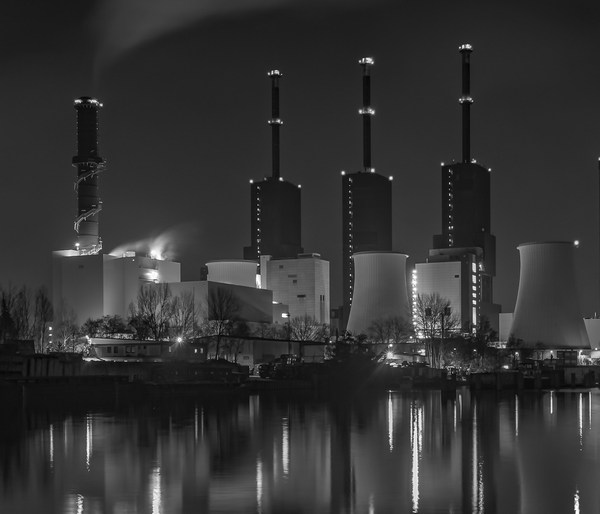Once-through cooling systems [Download this application case as PDF file]
In large industrial cooling water systems (CWS), in particular once through cooling systems (OTC), biological growth on surfaces, a phenomenon usually known as "biofouling", causes a number of issues. The very first phase, a layer of bacteria (biofilm) that forms in a few hours, already contributes to:
- reduce the performances of heat exchangers (a 20-micron thick bacterial layer decreases heat exchange efficiency by 30%);
- increase energy cost, due to friction;
- accelerate corrosion;
- pave the way to the settlement of larger organisms.

For these reasons, chemical treatments (biocides) are commonly applied, to prevent and limit such microbiological proliferation. These treatments shall be applied as soon as biofilm starts to form, since this slimy layer is highly resistant to biocides (up to 1000x more than free-floating bacteria), and its resistance increases with time. Different treatment strategies have been discussed in a first and in a second white paper by ALVIM.
In the OTC of this large power plant, chlorine dioxide was dosed on a daily basis, as a shock treatment (see figure below). This strategy was fine tuned to achieve the best efficiency, reducing at the same time as much as possible the corrosion of the old heat exchangers - caused both by bacteria (microbially influenced corrosion, MIC) and by the oxidizing chemical.

Considering that ALVIM Signal shows:
- a sharp and large increase when oxidizing agents are dosed - the increase is proportional to the concentration of the chemical;
- an increase in the baseline when residual oxidant is present;
- a gradual and stable increase over time (hours-days) when biofilm grows;
looking at the figure above, it can be noted that, from early January to late April, the daily treatment was able to keep biofilm growth under control. Since April, the concentration of the shock dose was reduced - as it can be noted observing the decrease in the daily peaks of ALVIM Signal (purple dotted line, in the figure). Then, in addition to the shock treatment, a continuous injection of chlorine dioxide (at low concentration) was applied, as highlighted by the increase in the baseline Signal (green dotted line, in the figure). Nevertheless, this was not enough to completely prevent biofilm growth, in this warmer season - indeed, a couple biofilm growth events were detected in May and in June. However, the biocide treatment was effective enough to remove settled bacteria in a short time, as it can be noted by the following decrease in ALVIM Signal, back to the baseline.
ALVIM Biofilm Sensor proved to be an effective tool for monitoring both the dosage of oxidizing chemicals and their effectiveness against biofilm, in different seasons and with different treatment strategies.
|
Do you have a similar problem with biofilm?
|





